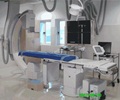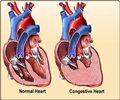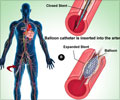Comparative trials and observational studies previously conducted in elderly populations have yielded conflicting results, researchers explain. These
Comparative trials and observational studies previously conducted in elderly populations have yielded conflicting results, researchers explain. These studies were performed before intracoronary stents and use of glycoprotein IIb/IIIa antagonists were routinely employed.
Therefore, Dr. Hanoch Hod, of Chaim Sheba Medical Center in Tel Hashomer, Israel, and associates followed 130 consecutive patients aged 70 or older treated for ST-elevation AMI. Eighty-six patients were admitted to one center where they were treated with thrombolytic therapy. The 44 admitted to a second center underwent primary angioplasty, except for one referred for bypass graft surgery.
Finally, the rate of recurrent MI during 6-month follow-up was 14% in the thrombolysis group and 2% in the percutaneous intervention group, the Israeli physicians report.
Dr. Hod's team concludes that, for treatment of elderly patients with acute myocardial infarction ,primary angioplasty with the routine use of coronary stents and intensive antiplatelet therapy is associated with better outcomes than treatment with tissue-type plasminogen activator (t-PA). However, they emphasize that their findings "apply only to a center that specializes in this reperfusion technique and is equipped and staffed with personnel prepared to offer immediate therapy 24 hours a day."
Am Heart J 2003;145:862-867.










